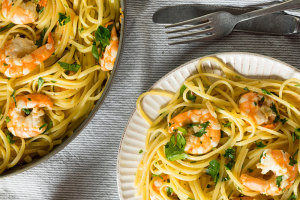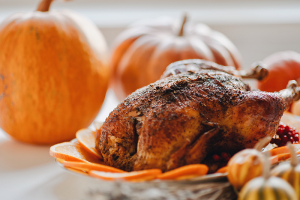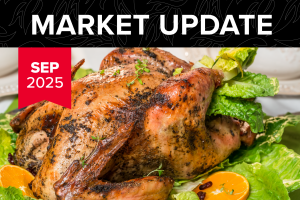Your monthly update on the state of the pork, poultry, beef, and seafood industries, direct from the category experts at Y. Hata.
Poultry
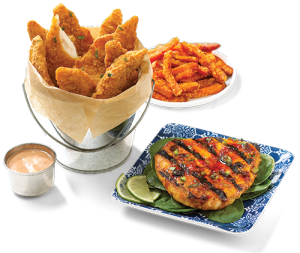
The poultry industry is challenged on multiple fronts but two of the most impactful are input cost and the Omicron variant of Covid.
Transportation & shipping, packaging, energy, labor, feed/grain, the list goes on where input cost either remains high or is going higher and that is reflected in the overall higher fresh poultry prices consumers are having to pay at the retail level. Although Hawaii is primarily a frozen market, we are competing against the retail industry for product and that affects the prices we pay.
The Omicron variant has really hampered the poultry’s industry labor force and a reduced workforce means slower processing lines and less production. Just when the industry was hopeful for an improvement in capacity, things have turned in the opposite direction and is expected to continue for the next 4-6 weeks.
- In a somewhat surprising situation, whole Duck and all Duck parts are in short supply, regardless of the brands, and that is mainly attributed to a lack of labor.
- WOGs and Fryers continue to be in short supply. Asking prices are the highest I’ve ever seen, up $.30 – $.60/lbs. from pre-covid levels.
- BL SL Random Breastmeat was trending down for a couple of months and now it is almost impossible to buy any, regardless of price.
- Jumbo Wing prices have taken a slight dip and is expected to stay close to these levels through the end of football season but more importantly the supply appears to be more consistent.
- BL SL Thigh prices have bottomed out and are rated as steady.
- High demand for Tray Pack Thighs at the retail level and less production at the processing plants mean very little product for Foodservice.
- The overall supply of Legmeat is better and prices have decreased.
Pork
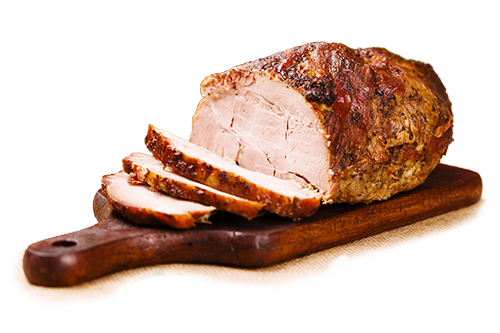
As we passed the holiday period and reduced processing days of late December, the industry was expected to ramp up the harvesting numbers but that has been reduced due to inclement weather and the Omicron variant. Overall, we’re seeing an increase in price across most of the pork items. But the biggest concern right now is boneless pork butts as the packers/processers do not have the labor to bone out the butts.
Both the Poultry and Pork industry is greatly impacted by the Omicron variant and expects to struggle with labor for a minimum of 4-6 weeks. At the same time with inflation touching literally all products at the grocery stores, retailers have featured chicken and pork heavily as they still represent the most economical form of protein. When you combine strong retail demand with reduced production, this eventually leads to higher prices and product shortages.
Beef
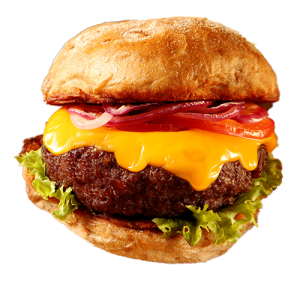
Although the worst of the COVID-19 pandemic appears to be behind the beef industry, labor shortages continue to be an ongoing challenge. The recent Omicron COVID-19 variant has significantly reduced production capacity and some plants have even operated with skeleton crews due to workers out sick. Additionally, robust export demand in China and Korea continues to remain at historically high levels. Although there are signs domestically that high prices have softened consumer demand for beef this has been tempered by the reduced slaughter at the plants.
- Prime graded beef availability has improved slightly after the holidays with mixed results for certain cuts. Prime striploin pricing has decreased substantially as dine in establishments such as steakhouses are not back to full capacity yet. Prime ribeye pricing on the other hand has remained strong buoyed by sustained retail demand.
- Pricing for beef trimmings which are used to produce ground beef, beef patties, sausages, etc. continues to trend upward as consumers gravitate towards comfort foods such as meatloaf, chili, etc. during the winter months. Additionally, retailers have stepped in with future ad bookings as they look to feature burgers leading up to Super Bowl weekend.
- Ribeye pricing trended downward as we entered the new year but that is poised to change as we head into February. Both retailers and foodservice stepped in recently to book product due to the lower price levels.
- Striploin pricing, which had been at relatively low levels, will be increasing as well as both the retail and foodservice sectors have taken positions significantly reducing the available inventory.
- Brisket prices have stabilized albeit at elevated levels largely due to manufacturers securing raw material in preparation for St. Patrick’s Day.
- Flap meat prices remained steady during the holidays but have started to increase as the retail segment looks to feature this again with prices having returned to more reasonable levels.
- Chuck Roll prices which decreased last month are moving back up again due to increased export demand.
- Chuck flat pricing will be decreasing by another $.09/lbs. for February, but international demand continues to remain robust. All grades of chuck flat remain hard sold even at these elevated prices.
- Short Rib prices decreased slightly this month, but we are still facing limited availability which could lead to increased prices next month.
- Oxtail prices have finally softened and will be decreasing $.28/lbs. next month. However strong export demand continues to support the high prices that packers have been asking.
As with other protein meats like pork and chicken, the beef industry continues to be challenged by persistent supply chain issues, inflation, energy costs, labor shortages, etc. Although there remains uncertainty as to what lies ahead in 2022, we should expect a continuation of higher prices as a new bottom has been established for beef.
Seafood
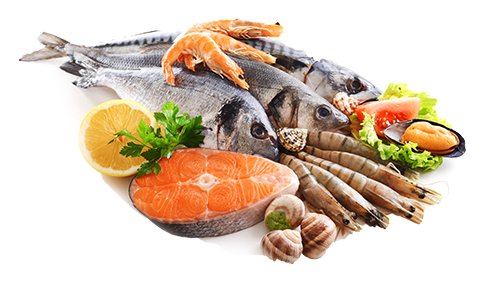
The backlog of ships/containers at the ports of Los Angeles and Long Beach have not improved and has impacted all imported seafood prices (except for white shrimp). Delays in the unloading of ships continue and can range from 2 weeks to 2 months or more.
- Snow Crab – We had contracted multiple containers last year on 5/8 and 8/UP sizes of Snow Crab and still have an abundance of product.
- King Crab – There has been a significant amount of King Crab arriving at the processing plants in January which caused a temporary oversupply, and the market did soften a bit.
- Lobster – Prices have been steady and availability good so like King Crab, Lobster is an item to consider adding to your menu.
Outlook
The shipping delays will continue for at least the first half of 2022 and that will have a direct impact on prices as everyone will be competing to get product. Like the United States, other countries are facing the same effects of Covid and their ability to produce has been reduced.
As I shared last month, in today’s world it is no longer “Just in Time”, it’s changed to “Just in Case”.

